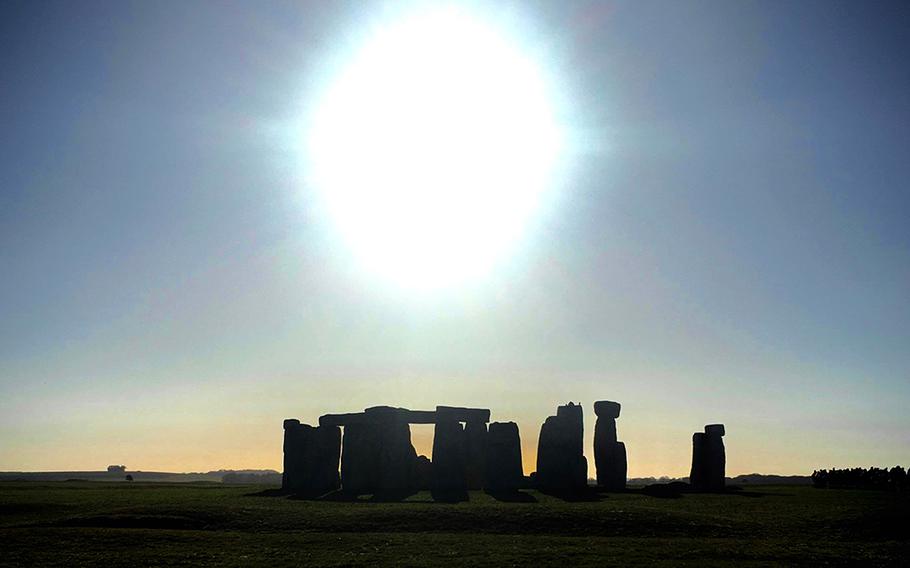
A livestream from England's Stonehenge, shown here in winter, will be available Dec. 21 since a public gathering at the ancient site will not be permitted this year. (iStock)
Public events around the world have been canceled in hopes of stemming the global pandemic, but there’s no stopping the forces of nature. One event that all life on earth experiences simultaneously is the solstice. At 11:02 a.m. Dec. 21, the sun in the skies above the Northern Hemisphere will reach its most southerly point of the year, and all those living above the equator will experience the shortest amount of daylight hours and the longest hours of night.
Just how long your day will be on Dec. 21 will vary depending upon your location. In Tarifa, Spain, the southernmost point in mainland Europe, you’ll experience nine hours and 41 minutes of daylight, whereas in Frankfurt am Main, Germany, your day will last eight hours and three minutes. But spare a thought for the folk of Kirkenes, a small town in far northeastern Norway, where they’ve been experiencing Polar Nights since Nov. 27, and the sun will first rise above the horizon on Jan. 15.
In the year that so many aspects of our lives went on line, the ability to observe solstice-related phenomena in real time is a ray of hope — provided, of course, that no cloud cover obscures the proceedings on the big day.
Stonehenge, England: At the time of both the winter and summer solstices, English Heritage welcomes druids, pagans, historians, scientists and the merely curious to experience sunrises and sunsets beside the famous ring of upright rocks in Salisbury whose construction dates to around 2500 BC. At the time of the winter solstice, the sun would have set between the upright pillars of the tallest of the arched structures known as trilithons. This particular one is now collapsed. Archaeologists surmise that Stonehenge’s winter solstice might have been more important to its Neolithic builders than the summer solstice, with feasts the likely means they would have marked the shortest day of the year and the gradual return of the sunlight.
In the interest of public health, no Winter Solstice gathering will be held at Stonehenge in 2020. Instead, the Winter Solstice sunrise will be live-streamed from the stones on the morning of Dec. 21 and will be free to watch on all English Heritage social media channels. And it’s not just during the solstice that the public can experience the skies above Stonehenge. The Skyscape website provides users with a view to the heavens above the iconic stone circle and to learn about the movements of the sun, moon and planets. The visuals are not actual live views but representations created as a composite from various sources. Daytime sky views are accurate to within a five-minute window and reflect actual weather conditions; at night, a computer generated image displays the location of the stars and the five planets visible to the naked eye. Online: english-heritage.org.uk/visit/places/stonehenge
Newgrange, Ireland: Predating Stonehenge is this ancient Neolithic temple located about 35 miles north of Dublin. Within this massive round tomb built of stones and covered by a mound of earth, a stone passageway leads to a central chamber into which the ashes of the dead were placed. It was only in the late 1960s that scientists discovered that at the dawn of the winter solstice, a shaft of light shines through a perfectly positioned portal and lights up the corridor leading to the basin of ancestral remains. The phenomenon lasts about 17 minutes.
As the number of hopefuls desiring to witness these moments firsthand far exceeds the site’s capacity, a lottery is held at the end of the September each year to determine who’ll be allowed inside at dawn on mornings between Dec. 18 and 23. Others gather just outside the mound’s entrance. This year, for the first time ever, it’s planned to live-stream the event across the world. For details online: newgrange.com
Elsewhere: Stonehenge and Newgrange are just two examples of ancient sites built in alignment with solstices and equinoxes. The Orkney islands, an archipelago off the northeastern coast of Scotland, is home to many Neolithic sites. On its largest island is found Maeshowe, a chambered burial tomb whose rear wall becomes illuminated during winter solstice sunrises. Many of the mysterious stone edifices known as Nuraghe, some 7000 of which dot the landscape of Sardinia, feature entrance orientations that point towards winter solstice sunrises. The Mnajdra complex in Malta, today a World Heritage site, consists of three temples, the lowest of which is aligned so that during the vernal and autumnal equinoxes, sunlight passes through the main doorway and lights up its main axis. At the time of the summer and winter solstices, sunlight illuminates the edges of the megaliths flanking its doorway.
Modern cultures celebrate solstices too, so mark your calendars for 2021. The Burning the Clocks festival in Brighton, UK, is a parade of costumed marchers holding lanterns aloft, fireworks and a blazing bonfire on the beach. Fusch, a village at the foot of the Grossglockner mountain in the district of Zell am See in Austria, marks the day with torchlit hikes, songs sung around a blazing bonfire and the appearance of the Perchten, frightening fur-clad characters with horns.